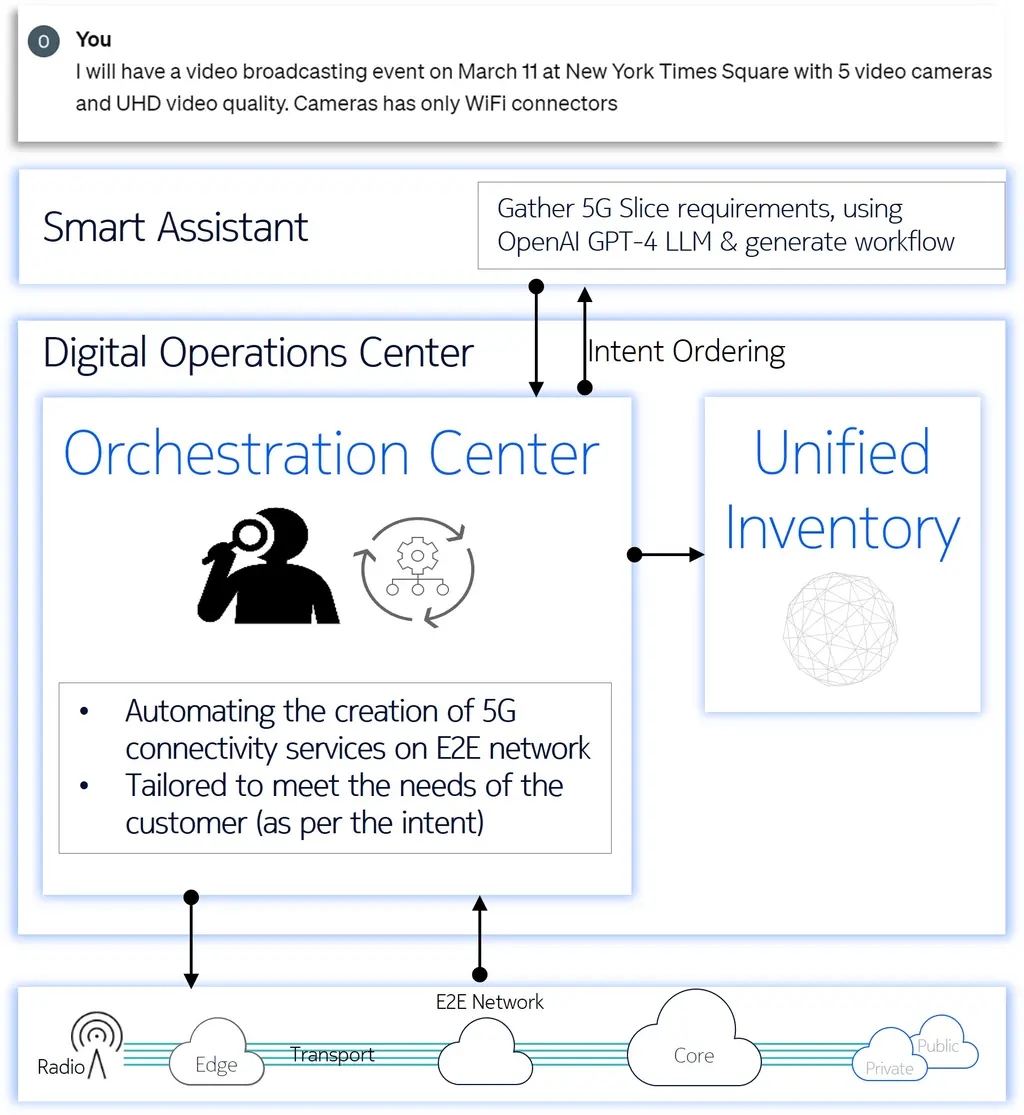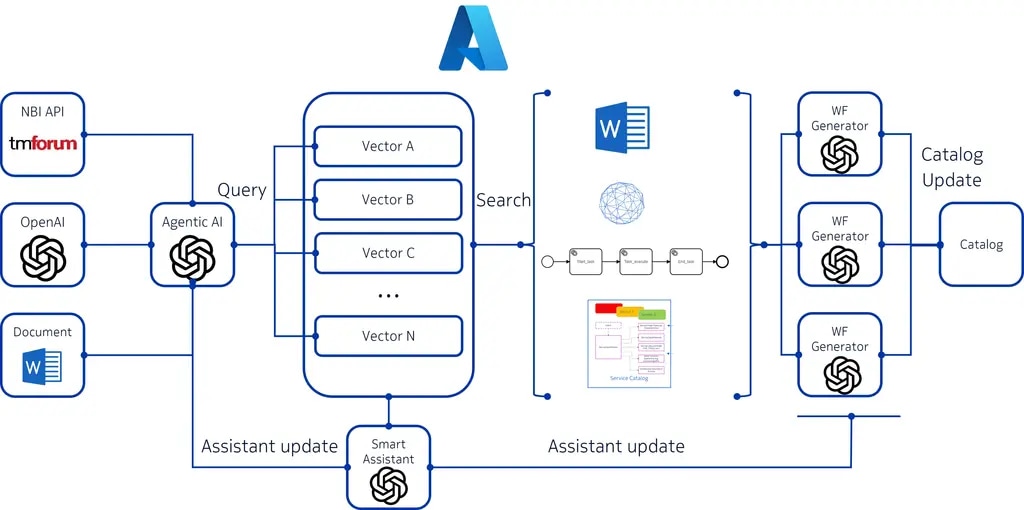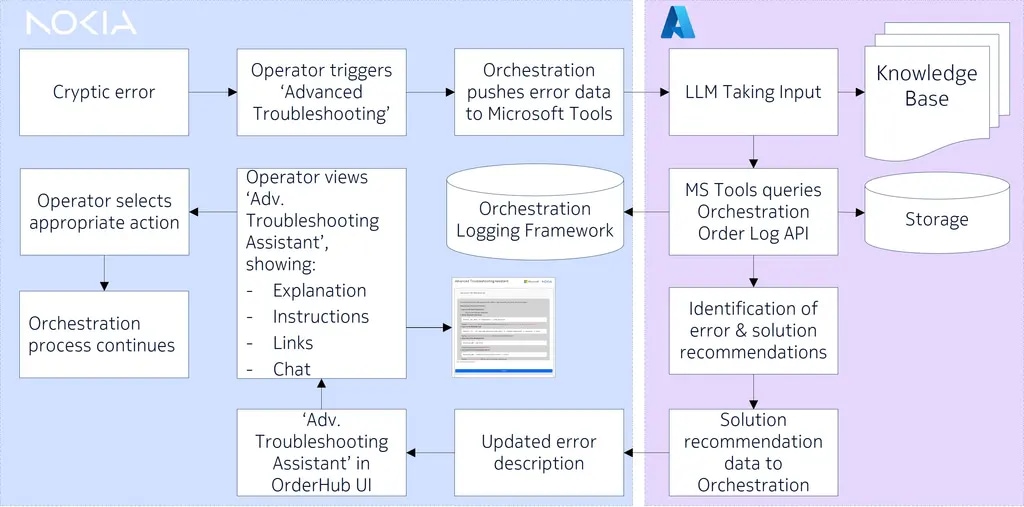Orchestrating the future of fully autonomous networks with GenAI

“Very slowly, over thousands of years, the ideal of the perfect machine was approached – that ideal which had once been a dream, then a distant prospect, and at last reality: No machine may contain any moving parts. Here was the ultimate expression of that ideal.” Arthur C. Clarke, The City and the Stars
Arthur Clarke published his famous science fiction novel in 1956, and little did he know how relevant this would be to us today, nearly 70 years later. In the telecom industry, we talk a lot about AI and automation, but what is our ultimate goal, our ideal state? It is best described by TM Forum’s Level 5 Automation: a fully autonomous network, meaning the network operates completely independently with closed-loop automation across all services, domains, and lifecycle stages, requiring minimal to no human intervention.
Optimizing the orchestration process
To achieve this vision, Nokia is collaborating with Microsoft to demonstrate how GenAI-powered service orchestration and assurance can accelerate the journey towards fully autonomous networks.
We deconstructed the entire orchestration process from the ground up, identifying opportunities to enhance each stage:
-
Design stage: Leveraging UI/Low-Code tools to create or modify workflows, enabling their seamless publishing into the catalog.
-
Order-capturing stage: Receiving input through UI, APIs, or other sources from the northbound system to gather specific order details and parameters, conducting feasibility checks, facilitating negotiation for modifications when needed, and managing intent storage and bookkeeping.
-
Order Processing (Runtime) stage: Handling the decomposition and composition of orders into tasks, executing them, updating inventory, and tracking failures throughout the process.
Each of these stages can be significantly enhanced with AI capabilities, bringing us closer to achieving full Level 5 automation.
At Nokia, we adopt a system design approach to AI, emphasizing modularity and flexibility. This approach integrates multiple AI agents and tools, all orchestrated through end-to-end use cases designed for an autonomous system. We refer to this as System Intellect, a framework that leverages the power of AI and GenAI, specifically tailored to meet the system's requirements. By operating within defined boundaries, this approach ensures trust and reliability for the fully autonomous execution of network operations.
In this blog, we’ll highlight two specific examples from the orchestration process that demonstrate closed-loop operation and the potential for Level 5 automation: design and failed order troubleshooting.
Order design and modification
Two primary use cases within the design process fall under the automation umbrella: workflow creation and modification.
For workflow creation, Nokia is collaborating with Microsoft to leverage tools and models for the highly complex task of automated workflow creation. By utilizing Microsoft Azure AI Foundry integrated with Azure OpenAI Service large language models (LLMs), we can capture initial requirements and seamlessly transform them into specific workflow templates, or even fully executable workflows.

Figure 1: Example request process
The system can process requests through multiple channels:
-
Chat for direct user input
-
APIs, which are critical for achieving fully closed-loop automation
-
External document imports, where specifications are analyzed, compared with the existing knowledge base, and used to generate workflows based on a set of instructions or Methods of Procedure (MoP).
Based on the source of information, the AI agent determines the optimal vector for validation and selects the appropriate reference data. This includes previous MoPs, API transformations, and the workflow catalog with metadata.
If a service already exists in the catalog, the system duplicates the workflow and applies only the necessary modifications. The embedded version control system automatically updates the release number or creates a new one as required.

Figure 2: Workflow Generation Framework with Azure AI Foundry and Azure OpenAI Service LLMs
As an additional automation mechanism, once a workflow is generated and validated by a human operator, the system prompts for permission to automate similar tasks in the future. With auto-approval enabled, the workflow can be published as "ready-to-use" in the catalog and executed by the Workflow Engine without requiring further human approvals. Examples of such workflows can be easily tracked within the Order UI.
Order processing and troubleshooting
One possible outcome of any order is failure. In some cases, understanding the root cause of the failure and determining the appropriate resolution can be challenging. The first and most straightforward mechanism involves multiple retries, which are governed by the workflow policy. However, if retries are insufficient, advanced troubleshooting and error resolution both become crucial to the process.
Advanced troubleshooting can be triggered either on-demand by the user or as a default automated response for specific use cases, significantly improving the efficiency of issue resolution.

Figure 3: Advanced troubleshooting resolution flow
When advanced troubleshooting is triggered, Azure AI Foundry performs an error analysis using available data. Powered by Azure OpenAI Service's GenAI models, it generates valuable insights that significantly enhance Mean Time to Detect (MTTD) and Mean Time to Repair (MTTR). GenAI delivers meaningful outcomes, including:
-
Detailed and Contextual Error Messages: Translating original error codes or basic descriptions into clear, actionable messages.
-
Root Cause Analysis (RCA): Identifying potential root causes based on historical data or troubleshooting guides from various sources such as Jira, documents, and knowledge bases.
-
Next Best Action (NBA) Recommendations: Providing specific guidance for resolving the issue, including referencing relevant documentation.
One of the most impactful outcomes at this stage is GenAI's ability to propose and, if feasible, generate a workflow for error resolution. This effectively closes the loop, enabling a seamless transition from troubleshooting to resolution.
Reaching fully autonomous networks
Achieving Level 5 Autonomous Networks hinges on optimized orchestration powered by AI and Gen AI. These technologies streamline complex processes, enabling predictive insights, self-healing capabilities, and dynamic optimization. By automating decision-making and coordinating network elements in real-time, AI-driven orchestration transforms networks into intelligent, self-sufficient ecosystems.
As demonstrated in these examples, we are working to significantly enhance automation in operations, paving the way toward achieving Level 5 Autonomous Networks, even in closed-loop scenarios.
To find out more about our market-leading Orchestration Center solution, visit our website here.




